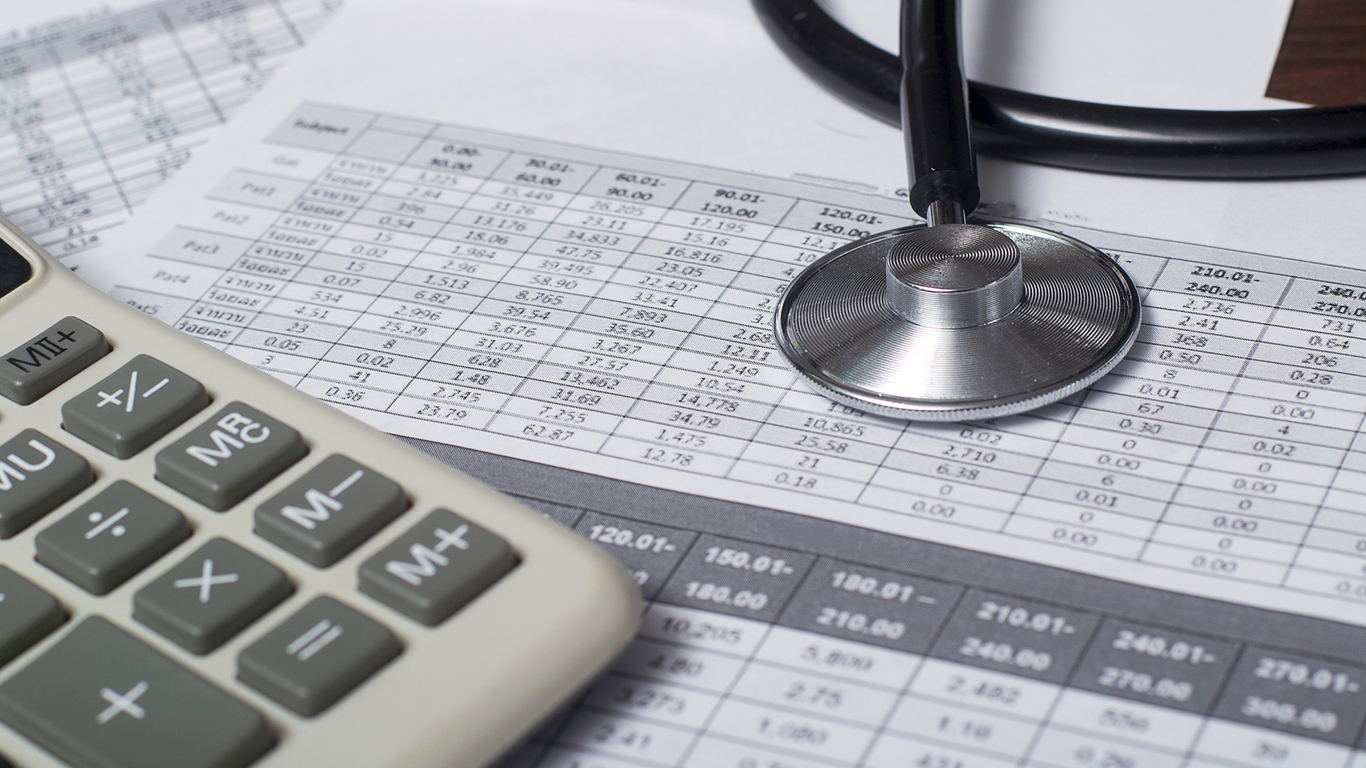Investing
As Tax Filing Deadlines Near, How the Obamacare Tax Can Surprise Many Investors

Published:
Last Updated:

With taxpayers knee-deep in tax season, it’s important to keep investments and taxes in mind when it comes to your tax bills ahead of the April 15, 2019 deadline. There are many pitfalls in taxes and investing that can trap investors into extra, unwanted tax bills. That’s life sometimes, but there are a lot of tax traps that can be avoided or overcome when it comes to investing and taxes.
24/7 Wall St. recently published 15 pitfalls and surprises for investors to avoid or to not overlook during tax season. One of the more recent issues, one that occurred over the past decade, was the 3.8% Obamacare investment tax, which was part of the Affordable Care Act.
Despite President Trump’s tax reform kicking in 2018, the Obamacare tax on investments did not go away. This 3.8% tax is applied on top of regular taxes for most taxable dividends and for capital gains above thresholds laid out by the IRS. The good news here is that most investors are not affected by the tax as it was applied to higher income earners and those with high investment income and/or gains. That threshold was for ordinary income of $200,000 for singles and $250,000 for married people filing jointly.
The bad news when it comes to the Obamacare tax in particular is that many more people have likely risen above the $200,000 and $250,00 thresholds in recent years. Investors need to consider that the income threshold for any tax category is based on each tax year individually, so having a really good year of income and gains can create a lot of surprises at tax time if you haven’t already been used to paying the add-on taxes.
If you exceed the applicable threshold amount, you will have to pay an additional 3.8% on the interest, gains and dividends on investments above certain thresholds. And it’s all up to you to discover or realize this ahead of the tax filing deadlines. Your brokerage firm and other investment management firm wherein you own your securities will by and large not take any special precautions to prepare you for the extra 3.8% tax.
Where this can become a problem is for investors who are high earners is when they have significant dividend income on top of big capital gains. If you are subject to the Obamacare tax, or the Net Investment Income Tax (NIIT), then you could see the taxes hitting you from both ways for the tax year 2018.
A very recent market action will bring this tax front and center for some investors. When the markets went into panic mode in the fourth quarter of 2018, many investors began to worry that the almost-10-year bull market was heading to the stockyards for slaughter. With the indexes having recovered 300% since the bull market began in March of 2009, and with many of the great technology companies and others seeing gains of 500% to 1,000% over the past decade, many investors could be facing the 3.8% Obamacare tax twice for tax year 2018.
Assume you had a great year for your income in 2018 above the IRS thresholds, going just over the $200,000 (or $250,000 for households) level. And assume you had invested $25,000 wisely a half-decade or more prior to now and that was suddenly worth $125,000 — that’s a $100,000 capital gain if above that threshold. On top of your expected capital gains tax of 15% based on your tax bracket (or 20% if at the highest bracket), you will owe $3,800.00 more in taxes that no one ever told you about until your tax preparer or tax software sees it. Then assume there was dividend income collected of $3,000 during 2018. That’s another 3.8% tax, for another $114 due.
The IRS table has been added here for clarification, but there is also more data on the same IRS topic page. According to the IRS Topic #559 on Net Investment Income Tax, a 3.8% Net Investment Income Tax (NIIT) applies to individuals, estates, and trusts that have net investment income above applicable threshold amounts. In the case of individuals and the thresholds, the following table has been provided as 3.8% on the lesser of the net investment income, or the excess of modified adjusted gross income over the following threshold amounts:
The basic premise here is that higher earners and those with high interest or investment income and gains can afford the added tax, and this was originally called a fee rather than a tax when it was implemented. Owing another $3,914 in surprise Obamacare taxes might not be the end of world for a successful investor or high earner, but it can create problems beyond just the one year.
Where problems arise here is that tax surprises create a jolt when they are unexpectedly discovered, and they can create other problems if investors reinvest the money into a new investment. The investor might have to sell part of that new investment just to pay the surprising tax of the prior year, and that might create more tax ramifications with additional losses or gains to consider for the future tax season this time next year.
Are you ahead, or behind on retirement? For families with more than $500,000 saved for retirement, finding a financial advisor who puts your interest first can be the difference, and today it’s easier than ever. SmartAsset’s free tool matches you with up to three fiduciary financial advisors who serve your area in minutes. Each advisor has been carefully vetted and must act in your best interests. Start your search now.
If you’ve saved and built a substantial nest egg for you and your family, don’t delay; get started right here and help your retirement dreams become a retirement reality.
Thank you for reading! Have some feedback for us?
Contact the 24/7 Wall St. editorial team.